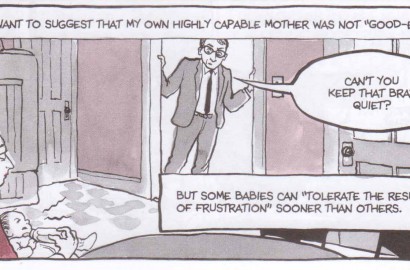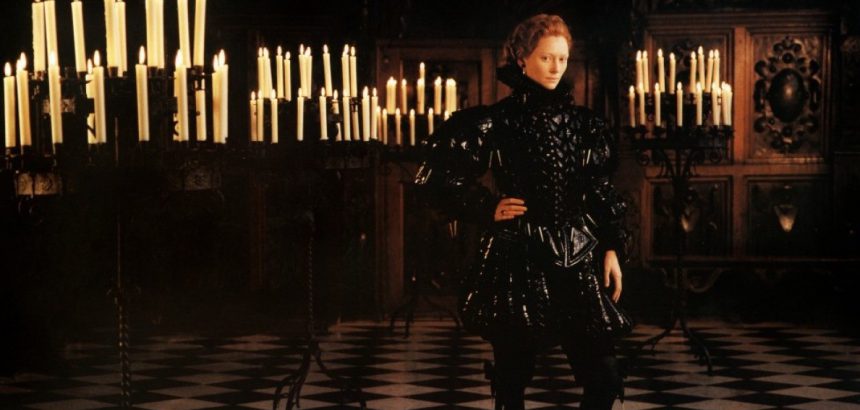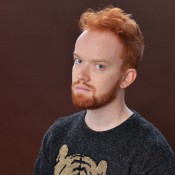Let’s make a canon! And let’s fill it with queer art, or queer-ish art, or art that has no idea how queer it is. Queer art is often secret art: black-market, whispered-about, read-between-the-lines art. And since secret art can be hard to find, let’s shine a light on a few of our favourite things so all our friends can see them.
We’ll call it a canon because it sounds Weighty and Important and Serious, but we also won’t be too serious about it. We won’t make The Canon, just a canon. Each month, we’ll chat with a different queer-about-town and ask them to submit something to the canon. And they’ll tell us what that book or play or movie or TV episode or sculpture or poem or dance piece or opera or photograph or painting or performance art piece or anything else means to them and why they think it deserves a spot in our illustrious canon.
This month, we talked to writer, performer, musician, and filmmaker Kelly McCormack about Orlando (both the novel by Virgina Woolf and the film by Sally Porter) as well as Ursula K. Le Guin’s novel The Left Hand of Darkness and Disney’s The Little Mermaid.
Queer art: let’s talk about it!
Woo-hoo! I had a knee-jerk reaction thinking about certain pieces of art, and I found that all of them had a similar common denominator. One is Ursula K. Le Guin’s The Left Hand of Darkness—which was a total trip for me, reading that when I was quite young. Then there’s a movie that fucked me up, which was Sally Porter’s Orlando.
Ooh, beautiful!
We’ll get into that movie. And we’re gonna go deep on it because it’s based on Virginia Woolf’s novel Orlando: a Biography, which was an ode to her female lover and it’s just so many layers of amazingness. I also thought of Ursula in The Little Mermaid, which is based on a famous drag queen…
She has a feeling of androgyny when she’s putting makeup on. But when she goes undercover as a human, evil, dark-haired Ariel, it was pretty much the hottest thing I’d ever experienced. It was the first time I had very confusing thought about women. Hot Evil Ariel!
The Little Mermaid is so queer.
It is so queer! And when Ursula becomes this woman, if you pull back the layers, it’s based off of a man dressed as a woman on stage, where two gay men—Alan Menken and Howard Ashman—who were now working in this Disney machine, coming from this gay scene in New York, making an ode to a drag queen as a female character, and then when she becomes this evil villain—a human Ariel—and she’s got black hair and purple eyes and she’s all like “La da da…” And she’s just kicking ass and taking names and not being interested in Eric in any real way…
No, she’s just obsessed with Ariel.
“I will have that little mermaid and the ocean will be mine.” She doesn’t give a shit about Eric! Any girl I was ever interested in for basically my whole life has looked like her: black hair, light eyes. Evil Ariel. And then I read The Left Hand of Darkness, which is about this genderless planet, and that really fucked me up. And then I saw Orlando and didn’t know what to do with myself. Have you seen the movie?
Yeah, a couple of times.
I accidentally watched it. It was just on television, and I was struck by it. This man goes through these decades, these generations and he’s sleeping with various people as a man, as a woman… it was so hot. It was so weird! And she looks like David Bowie.
I had never seen something like that before that used magical realism in that way, where she’s alive for hundreds of years, but no one talks about it. And that sorta blew my mind. Even right from the beginning, with Quentin Crisp as Elizabeth I?
And she says “you will never die.” She kind of puts a spell on him. And so did you ever read, cause it’s based on Virginia Woolf’s novel…
I have it and I’ve always meant to, but I never have.
It’s epic. Virginia Woolf had this affair with a woman—Vita Sackville, another poet. And she writes this book that’s about her female lover, but she casts the female lover as a young man who’s not gonna die. And he’s in pursuit of dressing feminine because back in the Elizabethan era, that’s how men showed that they were nobility. She puts nobility on her, puts clothes on her, knights her, makes her a servant, gives her long hair, short hair… She plays dress up with her female lover, while married to a man. And then Tilda Swinton gets cast in the film adaptation and it was shot by a woman? It’s just too good! I remember thinking for a long time after, was that movie real? Was it a dream? Is Tilda Swinton in that?
I loved that music video she did with David Bowie a few years back.
Obviously!
And everything she does.
In a lot of 17th and 18th-century French literature, people would talk about the idea that seeking androgyny was this search for happiness and freedom; if you live genderlessly, you live outside of the wear and tear of society. A man who dresses with feminine traits hasn’t been roughed by war or the expectations of masculinity. Which brings us to The Left Hand of Darkness. This guy from our planet goes to this planet called Winter and starts interacting with aliens. They look like us, but they’re completely genderless. And he has no idea how to communicate with them; no idea how to access diplomacy; how to access information. Because he realizes that all language is gendered. The book was banned in the 60s because people thought it was too gay-positive or too trans-positive. And Ursula K. Le Guin does this masterful job of writing genderless. It’s a trip reading the book. It opened up a lotta doors!
It’s interesting that you found that throughline.
And now, I have seen more overtly queer or lesbian material. But this kinda genderqueer thing has always been with me and always been a thing I’ve gravitated towards.
Related posts
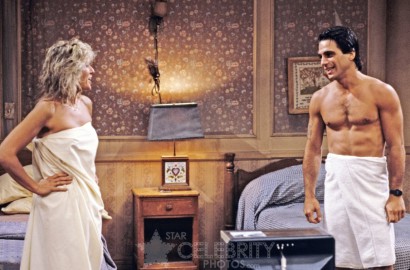
A Queer Art Canon: Anthony Johnston and Who’s the Boss?
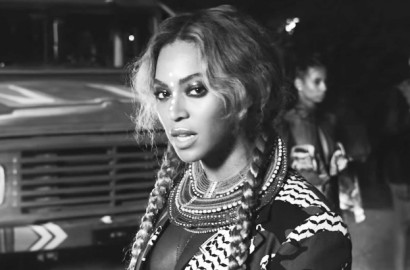
A Queer Art Canon: Vivek Shraya & Beyoncé’s Sorry
